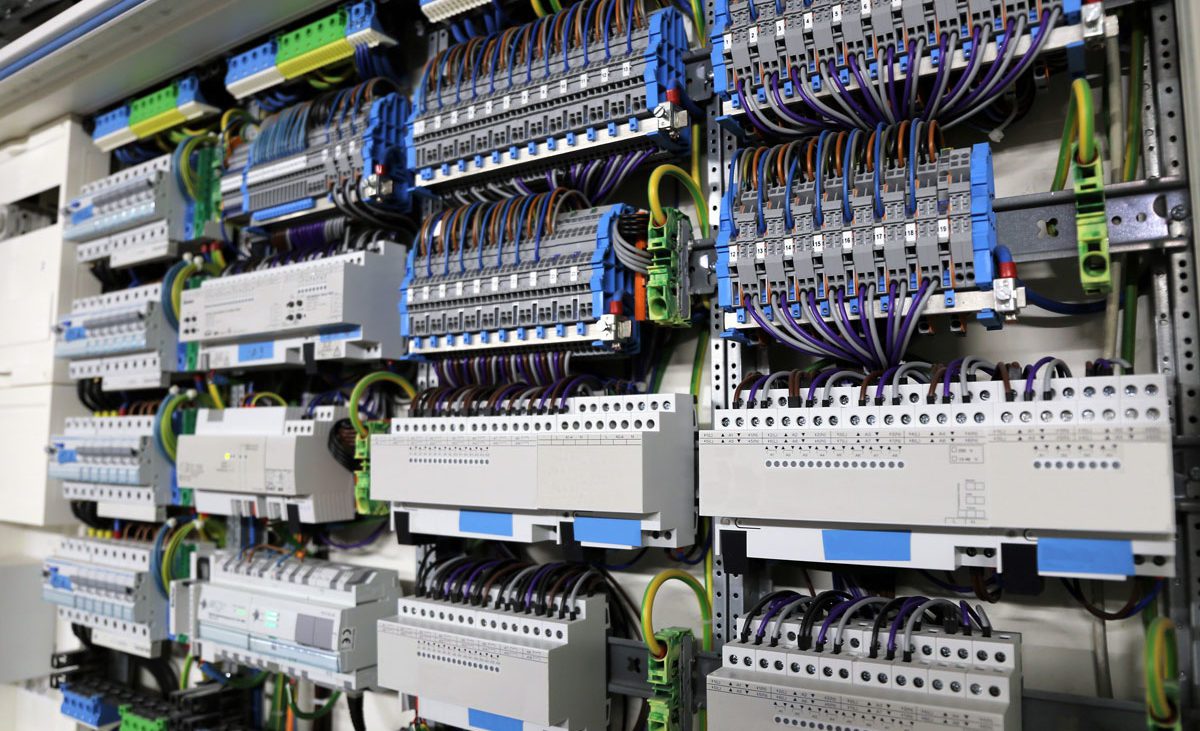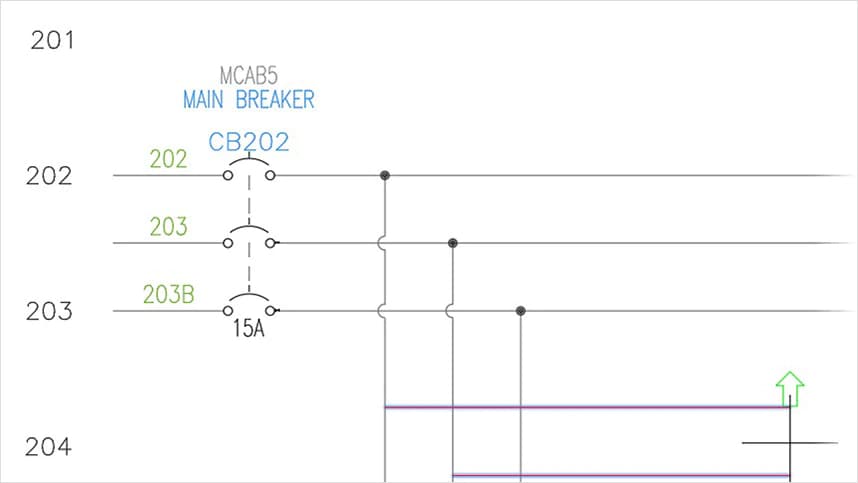Complete Industrial Electrical Design Services to Meet Complex Power Demands
Innovative Electrical Design Providers for Modern Framework
The advancement of modern-day infrastructure demands cutting-edge electrical design services that not just enhance operational efficiency yet also address sustainability challenges. As urban environments expand progressively intricate, integrating innovations such as wise grids and sustainable energy resources ends up being vital. These developments not just guarantee to maximize energy usage yet also foster strength versus future needs. The landscape of electrical design is undertaking fast makeover, motivating a more detailed exam of emerging fads and their effects for lasting infrastructure feasibility. What might the future hold for those who welcome these ingenious approaches?
Relevance of Innovative Electric Design
Cutting-edge electric design plays a critical role in modern-day facilities, affecting not only effectiveness however additionally sustainability. As cities develop and the demand for power increases, the need for advanced electric systems comes to be extremely important. These systems need to not only satisfy present demands yet likewise expect future growth and technological advancements.
A well-executed electric design can considerably decrease energy intake, thus lowering functional expenses and minimizing ecological influence. By integrating sustainable power resources, such as solar panels and wind generators, ingenious layouts can improve energy freedom and resilience. Clever grid technologies enable for real-time monitoring and monitoring of power distribution, optimizing efficiency and lowering waste.
Safety and security is another essential element of electric design. Carrying out rigorous criteria and innovative innovations can minimize threats connected with electric failures, making sure a safe environment for businesses and residents alike. Additionally, cutting-edge designs promote versatility, allowing facilities to integrate emerging modern technologies flawlessly.
Key Fads in Electric Design
As the landscape of electrical design remains to progress, several crucial fads are forming the future of the market. One substantial fad is the assimilation of wise innovation right into electric systems. The expansion of the Net of Things (IoT) has actually allowed real-time monitoring and control of electric devices, enhancing performance and helping with anticipating upkeep.
Another fad is the growing focus on modular design. This strategy permits scalable and versatile services, allowing facilities to adjust to changing needs without extensive renovations. In addition, making use of innovative simulation devices and Structure Info Modeling (BIM) is ending up being increasingly prevalent, enhancing the design process and improving partnership among stakeholders.
Moreover, advancements in products scientific research are causing the growth of lighter, a lot more resilient, and energy-efficient components. This advancement is especially essential for high-performance buildings and framework projects.
Last but not least, there is a significant shift in the direction of data-driven decision-making - electrical load calculation. Leveraging data analytics aids designers enhance systems for performance and cost-effectiveness. With each other, these patterns indicate a transformative period in electric design, enhancing performance, sustainability, and durability in modern infrastructure
Lasting Energy Solutions
Sustainable power services are significantly coming to be a critical emphasis in electric design, showing a broader dedication to environmental obligation and source effectiveness. These remedies aim to lessen ecological influence while enhancing energy consumption in various frameworks, from property buildings to large commercial facilities.
Among the leading techniques involves the assimilation of renewable resource resources, such as photovoltaic panels and wind generators, into electric systems. This not only lowers dependency on nonrenewable fuel sources however likewise enhances energy resilience. In addition, cutting-edge power storage space systems, such as sophisticated batteries, enable effective monitoring and circulation imp source of energy, guaranteeing that excess power created throughout top manufacturing can be made use of during high demand periods.
Furthermore, energy-efficient design practices are being taken on to enhance general system efficiency. This consists of using energy-efficient illumination, cooling and heating systems, and clever structure innovations that check and adjust power use based upon tenancy and ecological conditions.
Smart Grid Technologies
The implementation of sustainable energy remedies naturally causes the expedition of wise grid technologies, which play a critical function in modernizing electric systems. Smart grids leverage advanced communication modern technologies and information analytics to enhance the reliability, efficiency, and sustainability of electricity circulation. By integrating digital modern technology with conventional grid infrastructure, these systems help with real-time surveillance, automated control, and boosted decision-making capabilities.
Among the crucial attributes of clever grids is their capability to fit sustainable energy resources, such as solar and wind power. This adaptability not just reduces dependence on fossil fuels but also allows for a more decentralized energy production model. Furthermore, wise grids allow need reaction programs, where consumers can readjust their energy usage based upon real-time rates, thus promoting energy preservation and minimizing peak tons needs.
In addition, wise grid modern technologies improve grid strength by allowing quicker recognition and resolution of outages, eventually minimizing downtime. With predictive maintenance and analytics, utilities can maximize procedures and improve service distribution. As cities and communities remain to advance, smart grid modern technologies are vital for constructing a lasting and efficient electrical framework that meets the demands of modern-day society.

Future-Proofing Infrastructure
To guarantee long-term stability and versatility, future-proofing infrastructure is important in the rapidly advancing landscape of electrical design services. As modern technology developments and power needs shift, it is vital that electrical systems are made with flexibility in mind. This entails incorporating scalable options that can accommodate future upgrades without demanding comprehensive overhauls.

Furthermore, sustainability needs to be a foundation of future-proofed layouts. Utilizing sustainable energy sources, such as solar and wind, and enhancing power efficiency minimize reliance on fossil fuels, straightening with global initiatives to deal with climate adjustment.
Conclusion
By focusing on performance, sustainability, and flexibility, these services attend to the progressing demands of energy systems. The integration of smart grid technologies and lasting power options enhances durability and minimizes operational costs.
A well-executed electrical design can significantly lower energy intake, consequently reducing operational expenses and reducing environmental influence. By integrating eco-friendly energy sources, such as solar panels and wind generators, ingenious layouts can improve power freedom and resilience. Additionally, innovative power storage systems, such as innovative batteries, enable effective monitoring and distribution of energy, making certain that surplus energy generated during top production can be made use of during high need periods.
Wise grids allow need reaction programs, where consumers can change their energy use based on real-time pricing, thus promoting energy preservation and decreasing peak lots needs. (industrial electrical design)
As innovation breakthroughs and energy demands shift, it is crucial that electrical systems are designed with flexibility in i was reading this mind.